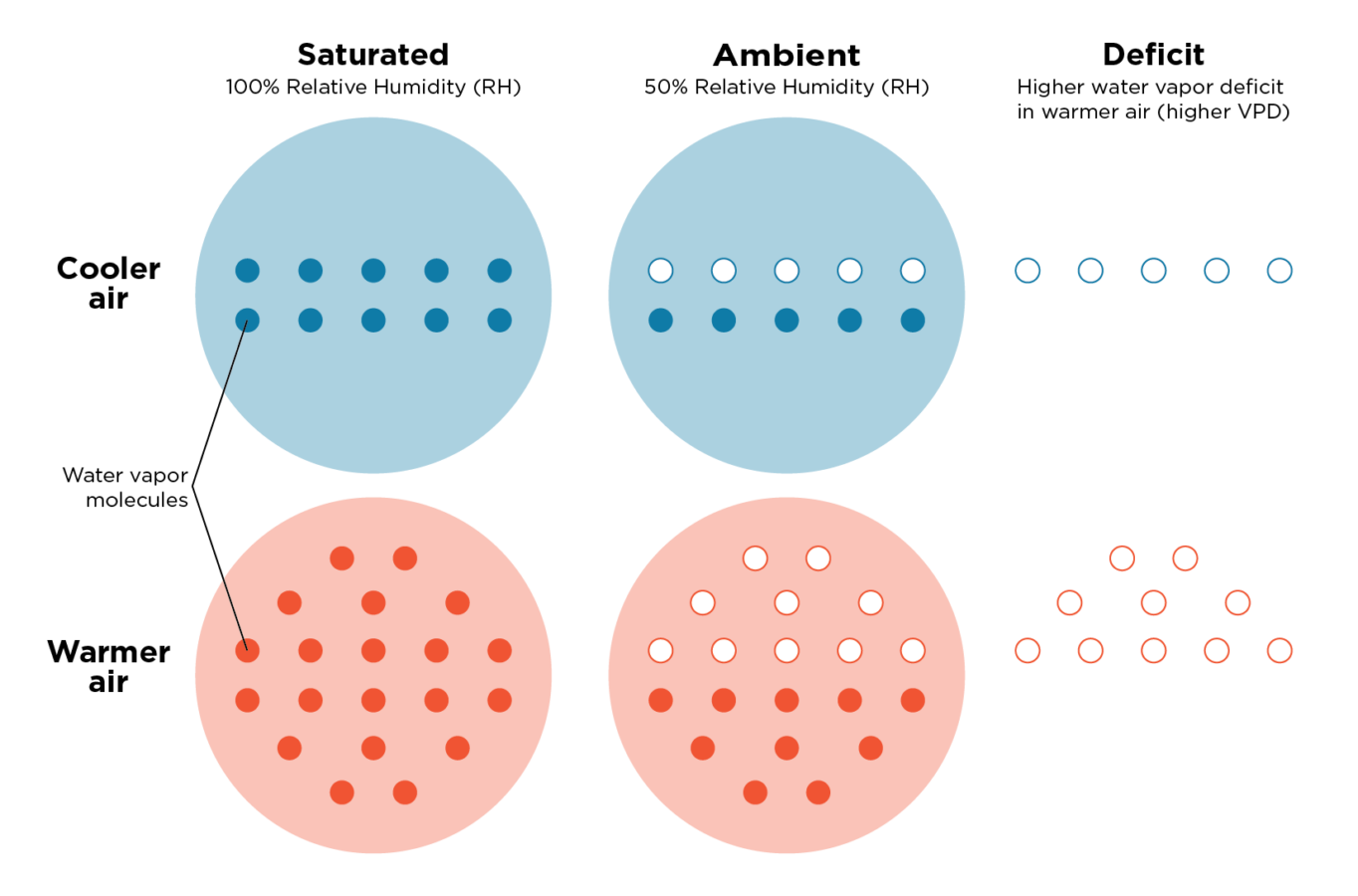Climate change is shifting so much about our world, from earlier blooms on Japan’s iconic cherry blossoms to rapid losses of glaciers and ice sheets. Many of these shifts, such as increases in wildfire activity, are taking a growing toll on our health and wellbeing.
Climate change is drying out our forests, priming them to burn. This drying is a result of many things (including higher temperatures and longer droughts ), but vapor pressure deficit (VPD)—a concept that doesn’t get much airtime outside of scientific circles—has emerged as a key factor that captures the collective impact of climate change on the dryness, or aridity, of forests.
In turn, the dryness of forests affects how readily they burn. Rising VPD due to human-caused climate change has been linked to increases in the number of large fires, total burned area, and area burned at high severity.
On its face, VPD may seem a bit too abstract to be relevant to broader conversations about responding to climate change. But digging a little deeper reveals that VPD could be a key measurement to help us understand how to adapt and fund ecological restoration and reduce risks in fire-prone communities.
So…what is VPD?
Vapor pressure deficit (VPD) is calculated as the difference between the amount of moisture that’s actually in the air and the amount of moisture that air could hold at saturation.
VPD is similar to relative humidity, which uses a percentage to describe how much moisture is in the air. But unlike relative humidity, temperature is always included in calculations of VPD.
In the image below, both ambient circles show 50 percent relative humidity—they are holding half as much water as they would at saturation. But they show very different VPDs because the amount of moisture required to reach saturation at higher temperatures (red) is double that of the lower temperatures (blue).

Foundations of vapor pressure deficit
Two principles of physics are key to understanding VPD and how it interacts with our ecosystems and atmosphere, which ultimately affect fire risk.
1.Water holding capacity
At higher temperatures, air can hold more moisture in the same way that more sugar can be dissolved in hotter water. Warmer molecules move more quickly than their colder counterparts, meaning there’s more space for moisture in the air or sugar in water when it’s warm.
2. Diffusion
Molecules will move from areas of higher concentration to areas of lower concentration, and the speed of that movement depends, in part, on how big the difference is. The bigger the difference in concentration, the faster the diffusion process occurs.
Adding a droplet of highly concentrated color to clear water illustrates this process, as the color disperses to a consistent concentration throughout the glass. Not all instances of diffusion lead to equilibrium though, since biological mechanisms like plants closing their pores, can interrupt the process before equilibrium is reached.

Consequences of rising VPD
Rising temperatures due to climate change means that VPD is on the rise as well, with consequences for individual plants, ecosystems and communities.
When plants perform photosynthesis, they open their pores to exchange oxygen for carbon dioxide. But, because the inside of a leaf typically has a much higher concentration of water than the surrounding air, opening their pores also means losing water via diffusion to the atmosphere.
Since photosynthesis is a do or die process for most plants (shout out to the parasitic plants of the world), changes to the outside environment can have serious consequences. When VPD is high (meaning the air could hold a lot more moisture), water loss from plants occurs more quickly, since the difference in concentration between the leaf and air is particularly pronounced. Over multiple weeks and months, a consistently thirsty atmosphere, pulling water out of plants, can lead to dead or, at a minimum, really dry vegetation.
From a wildfire perspective, consistently elevated VPD means that ecosystems can more easily ignite and spread fire, leading to the larger, higher-severity wildfires that have ravaged forests in western North America in recent years. From 1984-2015, human caused climate change accounted for at least two thirds of observed summertime increases in VPD in western US forests and led to a near doubling in total burned area over the same time period.
Increased use of forest management strategies like prescribed burning around communities and at the wildland urban interface can help to lower risks of catastrophic outcomes. However, these trends in VPD emphasize the urgency of reducing emissions, while also highlighting the importance of adapting to our climate-driven reality, since projections of VPD suggest wildfires will continue to escalate.
To learn more about vapor pressure deficit, read my colleague Pablo Ortiz Partida’s blog post, available in English and Spanish.

